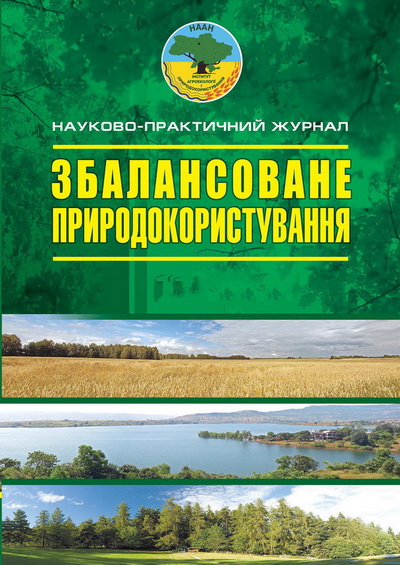QUALITY ASSESSMENT OF WATER RESOURCES (FOR EXAMPLE CHORNYI TSHLYK RIVER)
DOI:
https://doi.org/10.33730/2310-4678.3.2018.190401Keywords:
quality estimation, sewage, polluting substances, surface water, maximum permissible discharges, water quality, mineralization, anions, cations of the sumation group, reverse waterAbstract
The state of the water ecosystem of the Chornyi Tshlyk River near the location of JSC «Kirovogradgranit
» reflects an increase in the man-caused load, which causes the process of its degradation. The work
assesses the quality of the waters of the Chornyi Tashlyk River within the limits of the Dobrovolechkivsky
district of the Kirovograd region.The purpose of the study is to assess the impact of pollutants entering
the Chornyi Tashlyk River during the discharges of the waste water of the enterprise for its work on the
full (design) capacity. The object of the study is the quality of the waters of the Chornyi Tshlyk River
and the waste water of the enterprise. The scientific contribution is to improve the current methodology
for calculating the concentrations of the maximum permissible discharges of the enterprise in terms of
adjusting the conditional background and in checking the calculations.
Initial data provided by the laboratory of JSC «Kirovogradgranit» Pomichnyansky quarry for river
and sewage for the period from 2011 to 2016. Normative-technical documentation was provided by the
Environmental Protection Department of JSC «Kirovogradgranit». The assessment of the quality of water
was carried out using the method of detailed analysis. It is based on measuring or calculating the value
of each indicator for assessing the quality of water and is comparable to its standard (MPC). According
to the results obtained, we can conclude that the suitability or suitability of water for certain needs. Data
analysis shows that the state of the Chornyi Tashlyk River does not meet the sanitary norms established
for water utility objects: there is an excess of the MPC for the COD, BOD5, sulphates, total iron, copper,
zinc and chromium (VI). Other indicators are within the normal range.
Issue
Section
License
- The authors reserve the right to authorship their work and pass the journal the right to publish this work under a Creative Commons Attribution License license, which allows other persons to freely distribute the published work with the obligatory The authors of the original work and the first publication of this magazine.
- The authors have the right to make independent additional agreements on the nonexclusive dissemination of the work in the form in which it was published by this magazine (for example, to post work in the company's electronic storage or to publish as a monograph) , subject to the first publication of the link to this journal.
- Journal policy allows and encourages the placement of authors on the Internet (for example, in the repositories of institutions or on personal websites) manuscript work as to the presentation of this manuscript to the editorial board and during its editorial processing, as it contributes to The productive scientific discussion and positively affects the efficiency and dynamics of citation published work (see The Effect of Open Access).


